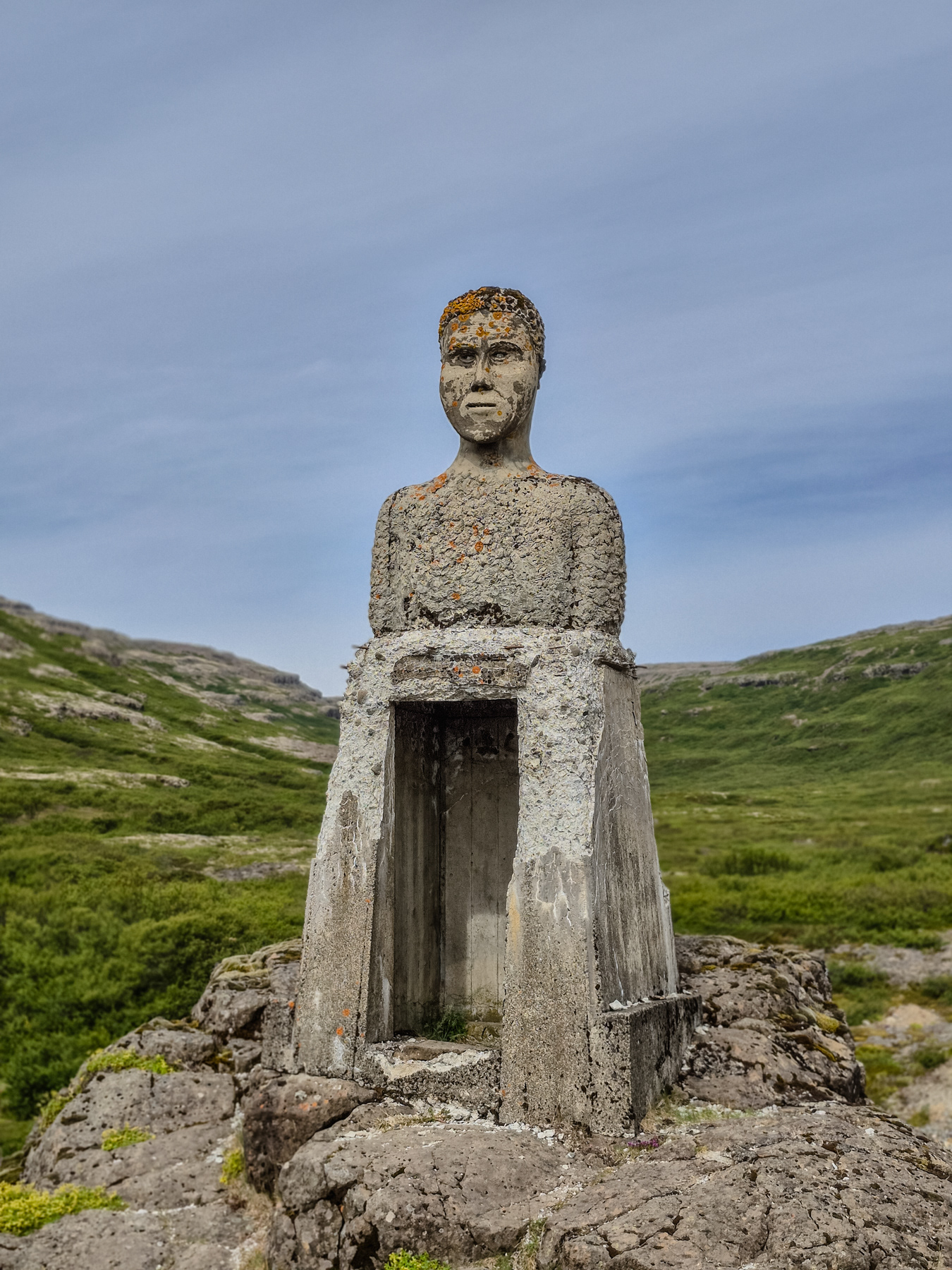A puffin at Látrabjarg, Westfjords, Iceland, July 2025
A small hot spring on the way, Westfjords, Iceland.

Sunset in the valley of the hot spring.

The cute changing room at the hot spring.

The Guardian of the Penna river

A dramatically shaped mountain marks the entrance to Road 612 (spot it in front for perspective), a stunning scenic way to go west.
The Geirþjófsfjörður fjord.




Clear red layers of iron.

Details of the Dyjandi waterfalls.
The Garðar BA 64 is the oldest steel ship of Iceland, made in 1912, and stranded at a Patreksfjörður beach since the beginning of the 1980s. It started its live in 1912, in Norway, as the Globe IV and was used for whaling. When the ship was deemed no longer safe, the owner let it be and that is where you find it rotting away today.

Sheep roam free everywhere on Iceland, including on the banks of the Patreksfjörður fjord.

An abandoned A-shape house on the southern banks of the Patreksfjörður fjord.
Elf houses, always have a good word for its inhabitants.
A fish farm in the Patreksfjörður fjord.

The remains of a US Navy C-117D (C-47), once based on Keflavik Air Base, has found its final resting place at the small Hnjótur Museum.

The Patreksfjörður is a great place to spot "retro" objects, such as this rusty tracked tractor.
View inland to the mountains on the southern bank of the Patreksfjörður fjord.
A geothermal pool looking out over Patreksfjörður fjord.
An easy part of the Látrabjarg road.
Spotted on the way.
A puffin covered in rain drops, Látrabjarg, Iceland, July 2025.


The Látrabjarg sea cliffs.
